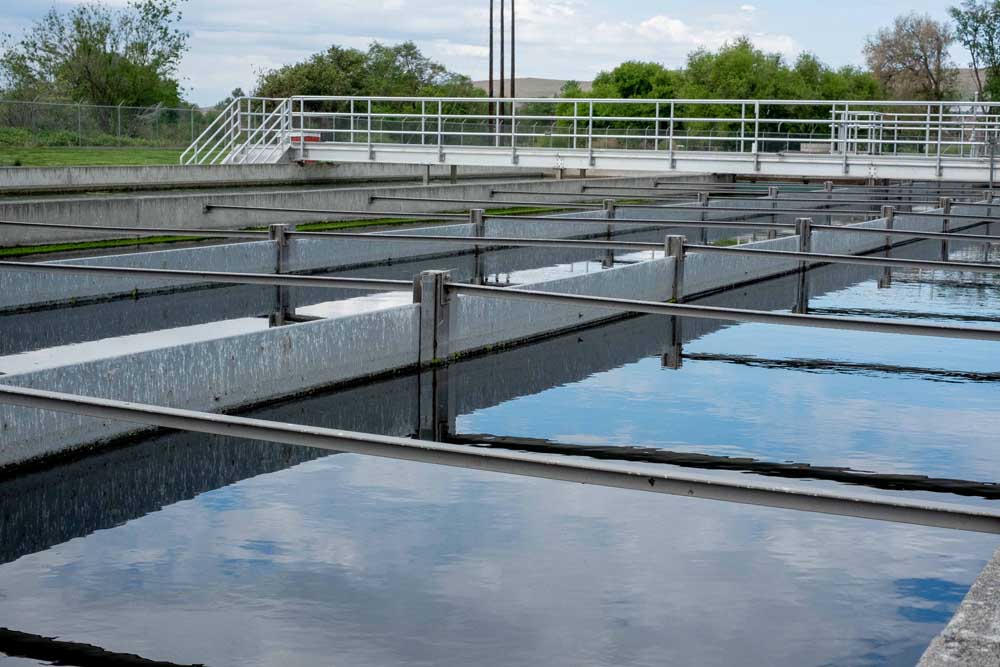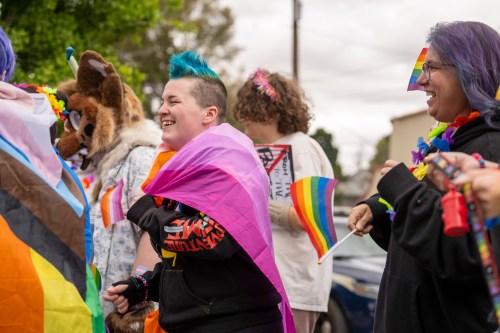Pendleton history
Published 10:58 am Friday, August 1, 2014

- <p>Blue Mountain Community College was established in Pendleton in 1963 and in 1974 had 3,000 enrolled students.</p>
After Umatilla County residents voted to move the county seat away from the city of Umatilla in 1868, a committee selected a two-and-a-half acre plot in the southwestern part of the county to place county buildings. The unincorporated area was named after U.S. Sen. George Pendleton of Ohio, who was being supported by the Oregon Democratic State Convention for president at the time. With the quick expansion of businesses and homes, Pendleton became a city in 1880.
1900s The dawn of the 20th century saw huge gains in capital improvement for Pendleton.
Three new schools and the citys first sewer system were funded by two separate bond issues for a total of $110,000. The City Hall built in 1908 at 34 S.E. Dorion housed city government, police and fire departments and school district.
The Pendleton Woolen Mills opened an idle mill in Pendleton in 1909, the same year Main and Court streets became the first paved streets in town. They were originally cleaned by a sweeper drawn by two horses.
1910s Born out of Roy Raley and friends and their nostalgia for the Old West, the first Pendleton Round-Up was organized in 1910. After volunteers added 3,000 seats to accommodate the crowd left waiting at the gates on opening day, 10,000 people attended the Round-Ups second day, making it an instant success.
After an intense competition with other Oregon cities, the Eastern Oregon State Hospital was built in 1912.
The Umatilla River levee was built in 1915, along with the citys water transmission line.
Prohibition across the United States in 1919 gave the underground saloons and bordellos a new clientele that would continue to visit for decades.
1920s While trying to stop a jailbreak at the Umatilla County Jail, Sheriff Til Taylor was shot to death in 1920. More than 500 people from Umatilla, Morrow and Union counties took part in the successful search to locate Taylors murderers. A statue of Taylor was built in his honor in 1929.
1930s As a result of the Great Depression, Pendletons only bank closed in 1932 to stem the rash of withdrawals and wouldnt reopen for nearly a year. The city also printed and issued scrip to be used instead of cash by city employees at local businesses.
Less than five years after building a 120-acre airport two miles west of town, the city built a new airport at its current location when United Air promised to put Pendleton on its mail route if more adequate facilities were available.
John Vert dedicated his sizable will to the city, which was used to build Helen McCune Junior High School and the auditoriums that bear his name in 1937. Vert was possibly best known at the time for throwing an egg at a minister advocating prohibition.
In 1939, streets bearing the names of Confederate figures like Jefferson Davis and Stonewall Jackson were changed to honor famous Pendleton pioneers.
1940s More than 2,000 U.S. soldiers came to Pendleton in 1941 when the city became the site of an air base, raising the population to nearly 13,000 in 1942. In the months after the bombing at Pearl Harbor the city ran blackout tests in which every citizen was required to turn out their lights.
The Doolittle Raiders, the first air squadron to bomb Japan during World War II, trained in Pendleton under Lt. Col. James Jimmy Doolittle.
Black Pendletonians formally protested local restaurants segregation policies in 1948.
1950s Two major facilities located in Pendleton received new buildings at the centurys midway point.
After public funding failed to come through for nearly two decades, a new Umatilla County courthouse was built in 1956. Pendleton High School also received a new structure on the site of a country clubs golf course in 1959.
The U.S. government set regulations in the 1950s on how many acres of wheat could be planted to reduce the surplus, but the limitation was offset by new varieties and fertilizers that made wheat farming more efficient.
1960s After a group tried unsuccessfully to eliminate the city manager position in a special vote in 1960, the city manager tried to fire the police chief before community outcry changed his mind.
Blue Mountain Community College was built in 1963 after an intense competition between Pendleton and Hermiston for the site of the main campus.
The chief and four policemen tried to resign in 1965 before the city council promised to prioritize their needs. Complaining of low pay, five firemen resigned the next year.
The last bordello in Pendleton, run by Stella Darby, was also closed in 1965, bringing the end to Pendletons underground era.
1970s Chain and big box stores start popping up in Pendleton.
Bi-Mart and Payless Drug Store came to town and the Melanie Square shopping center opened for business in 1976.
Having served as Pendleton School District superintendent and Blue Mountain Community Colleges first president, Wallace McCrae retired in 1964 after 15 years in local education.
1980s In an effort to move mental patients to smaller facilities, the Eastern Oregon State Hospital was transformed into the Eastern Oregon Correctional Institution after the Oregon Legislature gave its approval in 1983. EOCI welcomed its first inmates in 1985.
The Confederated Tribes of the Umatilla Indian Reservation helped reintroduce salmon to the Umatilla River, and in 1984 the first run was counted in 70 years.
As the prison opened in Pendleton, so too did the Oregon East Symphony, which attracts musicians from across the region.
Pendleton Underground Tours started operating in 1989, which gave tourists the chance to learn about Pendletons beneath street level history.
1990s The city saw important improvements to key structures.
The Umatilla County Jail opened a new facility, Pendleton High School received another renovation and City Hall moved into the building that used to house Helen McCune Junior High.
The Confederated Tribes of the Umatilla Indian Reservation also made strides, opening Wildhorse Casino and Resort in 1994.
In the political arena, Gordon Smith became the first Pendletonian in more than 60 years to win a U.S. Senate seat in 1996.
2000s While Blue Mountain Community College was able to expand its district into Baker County and add a $15.6 million Science and Technology Center, it also experienced internal strife.
In the early oughts, the school paid a $10,000 settlement over an offensive diagram in a textbook, punished instructors who temporarily left their students unattended on a field trip to Death Valley and experienced a months-long labor dispute with faculty that lasted until a few days before the start of classes. As a result, BMCC President Travis Kirkland resigned two years into his tenure.
In 2008, Pendleton voters passed a four-cent fuel tax to build a road from the airport to Interstate 84 in the hopes of developing an industrial park. The road was completed in November 2009.
Information from this story was drawn from the East Oregonian archives, the city of Pendleton and A Century of News and People in the East Oregoniana book by Gordon Macnab. Contact Antonio Sierra at asierra@eastoregonian.com or 541-966-0836.





